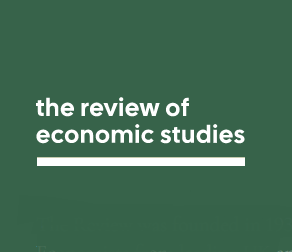
scott cunningham
@causalinf
Followers
52K
Following
167K
Media
5K
Statuses
99K
Economics professor paying it forward with 55 burgers, 55 fries, 55 tacos, 55 pies, 55 Cokes, 100 tater tots, 100 pizzas, 100 tenders, 100 meatballs
Waco, Texas
Joined October 2011
Does the word "next" in "next weekend" mean the immediate next weekend, or does it mean the weekend after the immediate next weekend? Come to my workshop on causal inference next weekend starting Sept. 27 to find out that and about other things! https://t.co/LsZPUOB8M7
mixtapesessions.io
Workshop taught by Prof. Scott Cunningham starting on September 27th.
0
0
27
How do you log out of your Twitter account ? I Seem to recall it being straightforward but now I can’t find the button.
1
0
1
$ASTS is a smart and ambitious company that seeks to build a space-based network provider for existing Mobile Network Operators (MNOs) like AT&T, Verizon, and Vodafone. Consensus expectations are for hyper growth, but the business of launching satellites is long, complicated and
22
7
30
We are hiring (again!). We are searching for up to four tenure-track hires. Two of these are open-field/open-rank. Two are endowed at the full professor level -- one with a focus on applied micro and poverty, the other with a focus on demography.
1
53
166
I would like to point out that family economics is a field, and it does consider the value of housework. It answers interesting questions like "what were the main reasons for women entering the labor force?" and "why did fertility rates recently increase for richer women?"
It's obsession with measurable data and its assumption that value = price. Also often leads them to the sociopathic conclusion that work that goes unpaid (e.g. housework) is worthless to the wider economy, rather than the result of exploitation and/or power dynamics.
1
5
18
If you’re in Philly, please join! This will be fun.
���️Event Alert‼️ Join @angeladuckw & @katy_milkman for a conversation with Nobel Prize winning economist @R_Thaler and @ChicagoBooth Professor @alexolegimas about their new book, The Winner’s Curse. 📅 Thurs, Oct 23 | 4-5PM 📍 Huntsman Hall G06 📩RSVP: https://t.co/oiM6GnV8W2
2
11
100
📢 AVAILABLE NOW: Breakthroughs in Targeted In Vivo Gene Editing abstracts! Explore the latest gene editing research from leading scientists and clinicians. View and download the collection of original research on our website, and don't miss your chance to dive deeper at the
asgct.org
Dedicated to cutting-edge solutions for targeted delivery, this event is your chance to engage with pioneering research, overcome tissue-specific…
6
0
5
🚨 Hiring Alert! 🚨 Interested in research that shapes education policy? A research team across @econuoft & UT Austin is looking to hire a predoc to work on research with the Puerto Rico Dept of Education & @JPAL_NA Start: ASAP Apply now: https://t.co/lne1c6E776
@econ_ra
0
5
3
Some professional news! Honored to be joining the Review of Economic Studies Editorial Board👇
It is a pleasure to welcome Jonathon Hazell (@JADHazell), London School of Economics, to the Editorial Board of The Review of Economic Studies. We value his insights and leadership in shaping the future of economic literature. #econtwitter #REStud
9
5
249
So, if you want me to come do a workshop at your school or location in Europe, send me an email! And fingers crossed I can get the books out by then. 6/6
3
1
27
And then with each school, distribute copies of the new book to all guests there. I wrote Yale about it; let’s see if I can pull that off. But I think that’s how I can seed the book, getting copies all throughout Europe as best I can, and also book more workshops. 5/n
1
0
20
Premium men’s jewelry that elevates every fit. Black Friday deals live now!
0
10
60
I think what I’m going to try to do is see if Yale can get the books ready for distribution prior to Third annual CodeChella Madrid in May and basically use it as a book launch. And then I’m going to try and line up my workshops around Europe, bounce country to county 4/n
1
0
23
That rabbit trail was rewarding for sure. I learned things that I then had to write up and remove. But it looks like it’s done. I’m reading proofs and editing that to send back. Haven’t seen any artwork. But point is, it’s going to be out next summer 2026. 3/n
1
0
32
I deleted the probability and regression chapter but then moved regression into unconfoundedness. It instantly screwed up that chapter and sent me on the longest of all long rabbit trails. Is it a rabbit trail or a rabbit hole? Let’s say rabbit trail due to character limits 2/n
1
0
31
My new book, Causal Inference: the Remix, which updates the first one, the Mixtape, is clocking in at around 750 pages. Two chapters on diff in diff, all up to date, a very long synth chapter, complete reorganization of unconfoundedness, then touch ups and deletions 1/n
7
42
526
Today's cool young researcher #econtwitter #econsky is @jurizzotto @feausp who works on topics related to education + domestic violence, particularly in Brazil
2
10
66
My philosophy has become if someone wants to tell me I owe them money, they’re going to have to go analog and come knock on the door. 5/n
0
0
3
So I bet if I scoured the email again, it would be clearer that the hyperlinks in the email itself would’ve had me giving away a password. I’m to the point where I don’t click on anything ever anymore. Nothing. 4/n
1
0
1
Well I logged in and got through all the security, thinking to myself how even could they have gotten my password given I create a new one every time, and sure enough — Twitter does not indicate anyone logged in. You can see the history in notifications and nothing 3/n
1
0
0
Scott Galloway explains the key to happiness. Spoiler alert, you won't find it scrolling this app. @profgalloway
9
9
56
But for some reason I decided to log in using my phone. I had seen the email while I was on my laptop, but as I have Twitter deleted on my phone, and it has a lot of two factor authorization that requires the phone, I just decided to do that and not the laptop browser 2/n
1
0
0
Interesting new phishing attack. I got an email saying that a suspicious login happened to my Twitter account from India IP address. I’d seen the exact email before bc everytime I log in, I generate a new password and then delete it, so I have to always do forgot my login 1/n
1
0
2
Just been made aware of this paper ( https://t.co/gnTebYqlwb) by prof @causalinf’s Saturday links (which you should subscribe to!! https://t.co/7IczdUg7yl) Should be of interest to some of you
0
4
7
This was a fun exercise, and I'm going to keep practicing presenting it, probably to myself, before I integrate it into my workshops, but most likely I'll cover in Causal Inference 2 later this year.
0
0
2
Most of these YC kids dropping out of Stanford to work on AI SaaS slop come from very well off families. DO NOT let them psyop you. Go to school. Fall in love. Make friends. Laugh. Go work at a Series A/B startup. You'll learn and mature a lot.
13
10
173


















